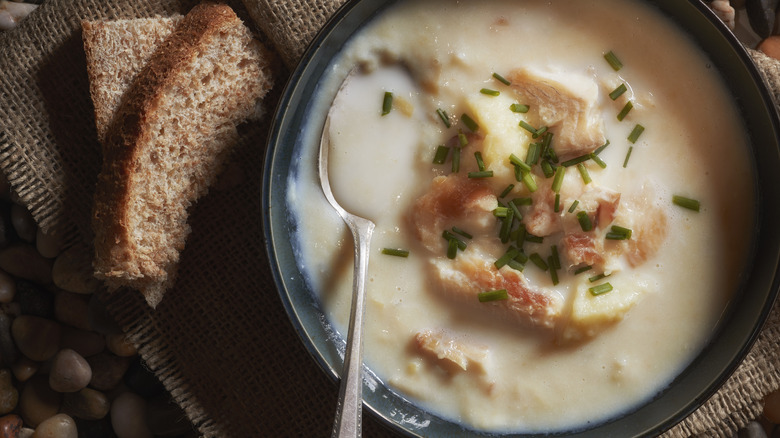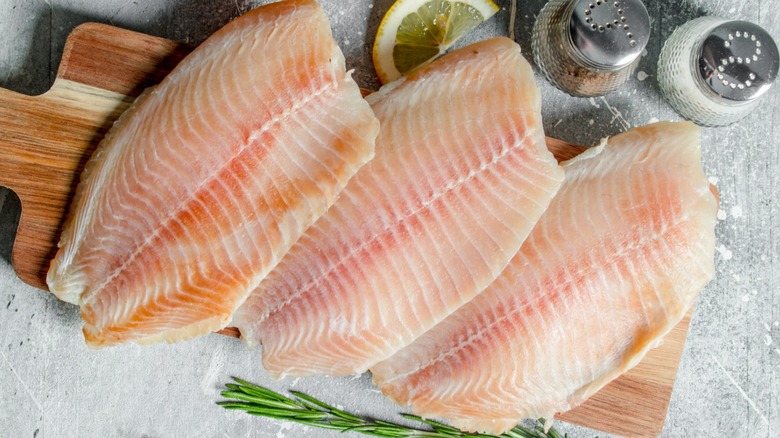For The Best Seafood Chowder, Use Whole Fish Filets Over Scraps
It doesn't take much to make a good seafood chowder. In fact, it's just a matter of working with a few quality ingredients and knowing how to use them to develop the best flavors possible. While there tend to be varying schools of thought for preparing the fish, we urge against cutting it into pieces. Rather than rely on smaller-sized scraps, keep filets whole. It's an effortless way to guarantee that chowder will turn out flawless every time.
Any type or combination of seafood can be used in a chowder. The ideal options, however, tend to be meaty and mild filets of a white fish like cod, haddock, or pollock. Fattier filets will also do, but they impart a fishier taste that isn't everyone's cup of tea. That said, never — we repeat, never — choose thin and delicate filets of sole, tilapia, and the like as they'll get lost into a chowder. It's for this same reason that even sturdy filets should be kept whole when added into a recipe.
Some recipes may call for chopping filets into (albeit, decently sized) chunks. But, there's a risk that they'll dwindle into nothing, the longer that they simmer in the pot. Instead, by leaving filets intact, this allows fish to hold onto its shape better. Even then, filets will eventually flake off into smaller pieces. The good thing is that when this does happen, these natural flakes will give chowder an increased textural variety, which ultimately improves the tasting experience.
To prep whole fish filets for chowder, follow these tips
Picking up a few filets from your local fish market might be the freshest option, but this isn't your only choice. Frozen filets fare equally well in a chowder as long as you thaw them properly beforehand. Regardless of what you decide, ensure filets are cleaned thoroughly before adding them into chowder. That means they should be void of any bits like mineral-tasting blood lines, scaly skins, or pesky bones so as to achieve the most pleasant of flavors.
While we do recommend leaving filets whole, sometimes you can't help but break out the chef's knife. For instance, if you're trying to incorporate a huge filet of salmon into a decadent Tom Kha-inspired chowder, cutting the fish into more manageable pieces is a necessity to make for easier and even cooking. That said, a good piece of advice is remember that the size of a filet shouldn't exceed the diameter of the pot.
As for how to add whole filets into chowder, do so after sauteeing aromatics and pouring in stock. Once things are bubbling away, lay whole filets into the stockpot, letting them simmer slowly over low heat. When the fish turns opaque and begins to flake, the chowder's ready to enjoy. At this point, you can use a spoon to carefully stir and break up the fish even further, should you desire. Otherwise, grab a bowl and some oyster crackers, and dig in!

